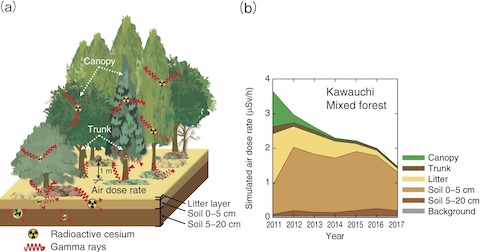
Fig.1-36 Modeling the contributions of radiation originating in different locations in forests to air dose rates
Around 70% of the atmospheric fallout in Japan from the 2011 TEPCO's Fukushima Daiichi NPS landed on forests. Forestry workers and residents living near forests are interested in air dose rate trends inside forests. The physical decay of radioactive cesium (134Cs and 137Cs), the radiation attenuation properties of forest matter, and the movement of 134Cs and 137Cs internally between different locations within forests need to be considered to explain the air dose rate trends (Fig.1-36(a)).
It is not clear a priori where the main radiation determining air dose rates in forests originates from because this cannot be measured easily. JAEA collaborated with the Forestry and Forest Products Research Institute and the University of Tsukuba to create simulation models that can explain air dose rate trends in forests. The models used particle and heavy Ion transport code system (PHITS) to simulate the gamma rays emitted by radioactive cesium and their interactions with matter to calculate air dose rates. By simulating the gamma rays originating in different locations in forests in turn, it was possible to calculate their separate contributions to the air dose rate. The models were initialized using measurements of densities, dimensions, and 134Cs and 137Cs radioactivity concentrations of forest matter sampled in eastern Japan between 2011 and 2017.
The results showed that the radioactive cesium making the main contribution to the elevated air dose rate in all forests was located either in the litter layer, the top 5 cm of forest soil, or the forest canopy.
Radioactive cesium within the forest canopy was a significant contributor to air dose rates in 2011 and 2012 in forests containing mainly evergreen trees (e.g., the mixed forest in Kawauchi, Fukushima Prefecture, Fig.1-36(b)), due to interception of the radioactive fallout in March 2011 by the canopy. By 2017, radioactive cesium located in the top 5 cm of forest soil was the main contributor to elevated air dose rates at this site and others, due to the breakdown of previous years' litter layers.
In the future, the created models will be used to make predictions for how different forest management options will affect air dose rates. The goal of this research will be to find effective and practicable proposals for reducing air dose rates in forests.
This research was conducted as part of a collaboration with the Forestry and Forest Products Research Institute and the University of Tsukuba.
(Minsik Kim)